Slamming doors are loud and can be dangerous. They damage the frame and can trap fingers. Soft-close doors offer a quiet, safe, and elegant solution to this common problem.
A soft-close sliding door uses a special hydraulic damping mechanism. This device is hidden in the track. It catches the door in the last few inches of travel, guiding it to a smooth, silent, and controlled close every time. This prevents slamming, adds safety, and reduces wear.
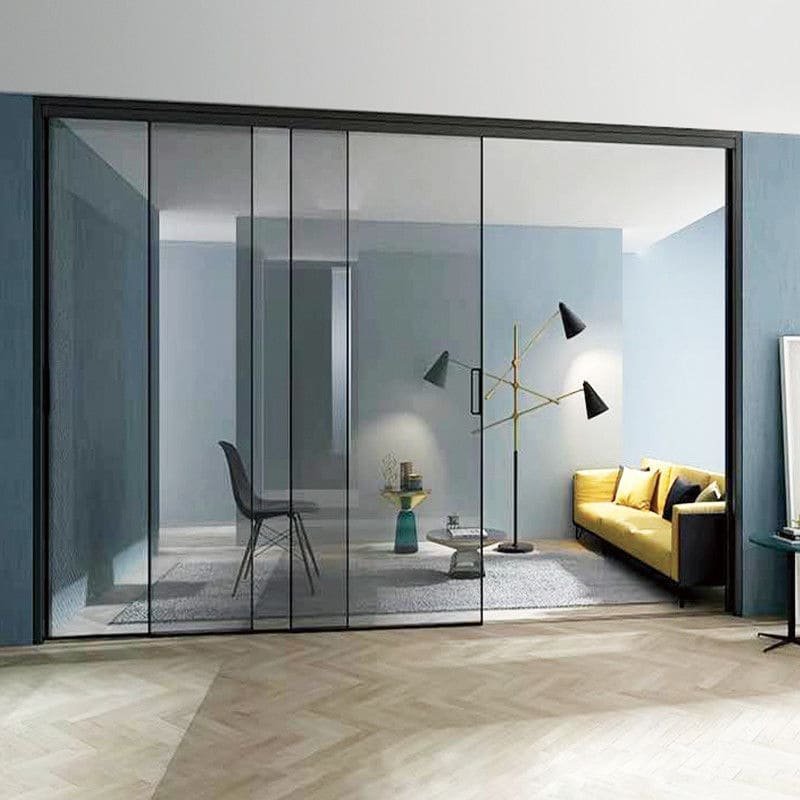
I’ve spent years in my factory, opensliding, perfecting hardware for doors and furniture. I’ve seen firsthand how a small component can completely change the user experience. The soft-close mechanism is one of those game-changing innovations. It elevates a simple sliding door into something more refined and luxurious. But it’s not just about luxury; it’s about smart engineering that brings practical benefits to everyday life. Let’s look closer at how these systems work and why they are becoming so popular with buyers like Jacky, who value quality and performance.
How does a soft-close sliding door work?
The smooth, silent glide of these doors seems almost magical. But you might wonder how it actually stops a heavy door from slamming. It’s all about a clever, hidden mechanism.
A soft-close system works using a damper and a trigger. The damper, a small hydraulic or air piston, is installed inside the track. A trigger is attached to the moving door. As the door closes, the trigger engages the damper, which then smoothly slows the door’s momentum for a gentle close.
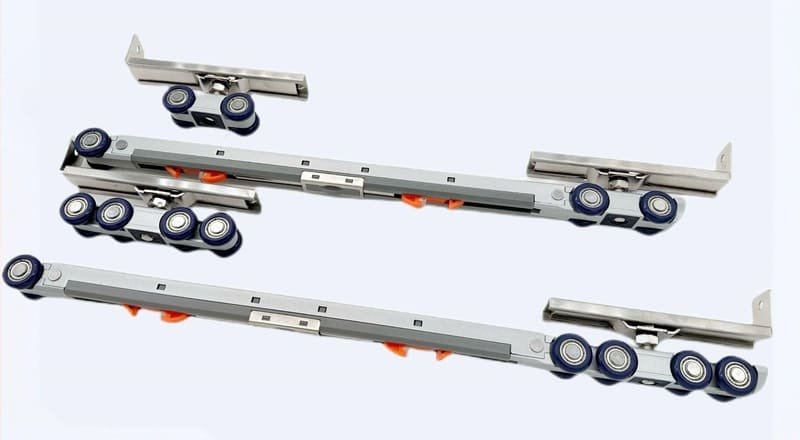
In my factory, we assemble these systems every day. It’s a simple but brilliant concept. The real engineering challenge is matching the damper’s strength to the door’s weight. A heavy barn door needs a much stronger damper than a lightweight wardrobe door. Getting this balance right is key to a perfect, effortless close.
The Core Components
The system is made of two main parts that work together.
- The Damper1 (or Actuator): This is the heart of the system. It’s a small cylinder filled with oil or air. When pushed, a piston moves through the fluid, creating resistance. This resistance is what slows the door down.
- The Trigger2 (or Activator): This is a small piece mounted on the top of the door. Its only job is to catch the damper’s hook or piston at the right moment to start the slowing process.
Here’s a simple breakdown of how they interact:
| Component | Location | Function |
|---|---|---|
| Damper1 | Fixed inside the track | Catches the trigger and provides resistance to slow the door. |
| Trigger2 | Mounted on the door | Moves with the door and engages the damper at the end of travel. |
The whole process is mechanical and requires no electricity. It’s a durable and reliable solution that adds significant value.
What’s the point of soft-close doors?
You might think a standard sliding door is good enough. But loud slams, rattling frames, and the risk of pinched fingers are common problems. Soft-close technology solves these issues beautifully.
The main point is safety, quietness, and longevity. Soft-close prevents injuries from slamming, creates a peaceful environment, and reduces stress on the door, frame, and hardware, making everything last longer.
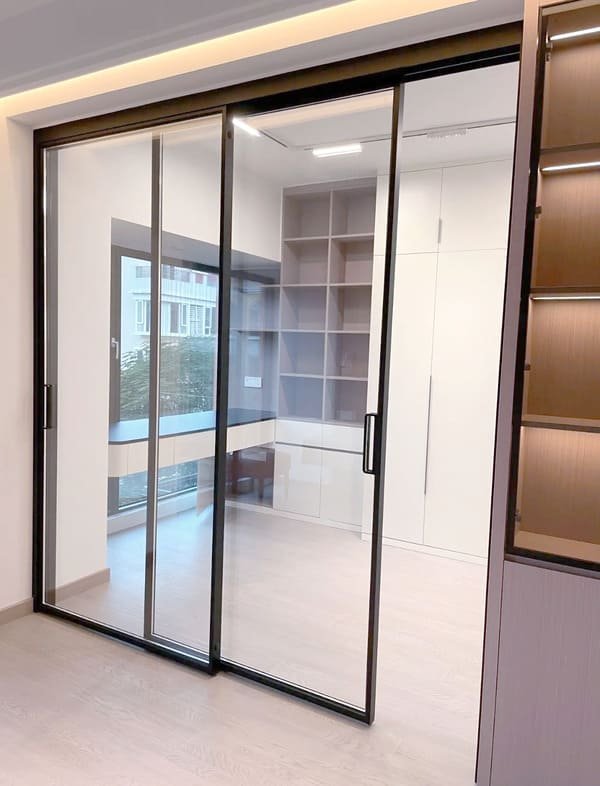
I often talk to professional buyers like Jacky from Canada. He sources hardware for high-end furniture and construction projects. For him, soft-close isn’t just a feature; it’s a mark of quality. It shows that the maker cared about the end-user’s experience. A quiet, safe door feels more premium and well-made. This small detail can make a big difference in how customers perceive the final product, whether it’s a wardrobe, a room divider, or a cabinet. The benefits are clear and add value far beyond their cost.
Key Benefits Explained
Let’s break down the advantages in more detail.
- Enhanced Safety3: This is the most important benefit, especially in homes with children. The slow-closing action prevents fingers from getting caught and slammed.
- Peace and Quiet: The loud bang of a slamming door is gone forever. This is great for light sleepers, office environments, or anyone who values a quiet home.
- Increased Durability4: Slamming a door puts a lot of stress on the door, the frame, and the rollers. By preventing this impact, the soft-close mechanism extends the life of the entire system.
Here is a comparison:
| Feature | Standard Sliding Door | Soft-Close Sliding Door |
|---|---|---|
| Safety | High risk of pinched fingers. | Very low risk; door slows down. |
| Noise Level | Can be very loud when slammed. | Nearly silent closing action. |
| Durability | Wear and tear from impact. | Reduced stress on components. |
| User Feel | Can feel harsh and abrupt. | Feels smooth, controlled, and high-quality. |
What is the price of a soft-close sliding door system?
Premium features often come with a higher price tag. You might worry that a soft-close system will be too expensive for your project. Understanding the cost factors helps you choose wisely.
The price varies based on door weight capacity, brand, and material quality. A basic kit for a light wardrobe door is quite affordable. A heavy-duty system for a large glass or barn door will cost more. It is an investment in quality, safety, and durability.
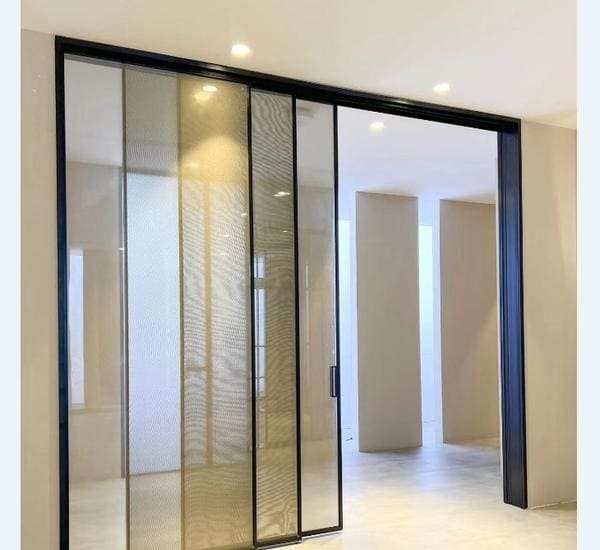
As a manufacturer at opensliding, we produce a wide range of these systems. The cost is directly related to the engineering and materials inside. A damper for a 100kg door needs to be much more robust than one for a 20kg door. We manage costs by producing at scale and offering different product tiers. This allows our wholesale customers to find a solution that fits their budget and quality requirements. Buying directly from a factory like ours often gives contractors and distributors a significant price advantage without sacrificing quality.
Key Cost Drivers
Several factors determine the final price of the hardware.
- Weight Capacity5: The heavier the door, the stronger and more expensive the mechanism needs to be.
- Brand and Quality6: Well-known brands with a reputation for reliability often cost more. The quality of the materials inside the damper also plays a big role.
- Single vs. Dual Damper: Some systems offer soft-closing and soft-opening. This requires a damper on both ends of the track, which nearly doubles the cost.
Here’s a general guide to pricing tiers:
| System Type | Typical Door Weight | Price Range (Hardware Kit) | Common Use |
|---|---|---|---|
| Light Duty | Up to 25 kg (55 lbs) | Low | Wardrobes, cabinets |
| Medium Duty | 25-60 kg (55-130 lbs) | Medium | Room dividers, interior doors |
| Heavy Duty | 60-120 kg (130-265 lbs) | High | Barn doors, large glass doors |
How do you stop a sliding door from slamming?
A slamming sliding door is jarring and can be unsafe. You may have tried simple fixes, but it keeps happening. The best and most permanent solution is a dedicated soft-close mechanism.
The most effective way is to install a soft-close hardware kit. This system adds a hydraulic damper to your existing door. It can often be retrofitted to the track, where it will catch the door before impact and guide it to a gentle, quiet stop.
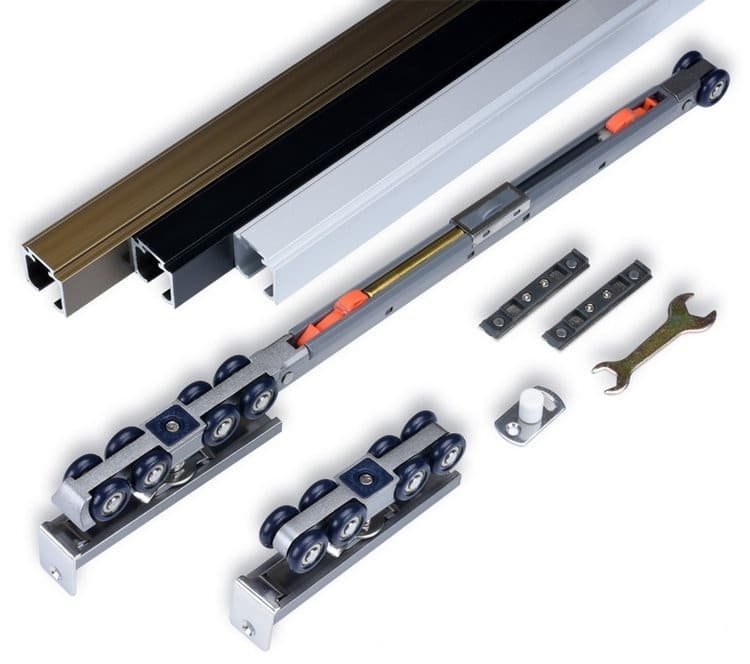
We supply these retrofit kits to distributors all the time. They are a popular upgrade for contractors working on renovations. While there are some temporary fixes, nothing compares to the smooth, controlled action of a purpose-built damper. Simple rubber bumpers can stop the noise, but they do so with an abrupt halt, which still jolts the door. A proper soft-close kit absorbs the energy gradually, providing a truly superior experience and protecting the door hardware from the shock of a sudden stop.
The Ultimate Fix vs. Temporary Measures7
You have a couple of options, but one is clearly better.
The Ultimate Fix: A Soft-Close Kit8
Installing a retrofit kit is the best long-term solution. Most kits are designed to be universal and can be added to many existing top-hung sliding door tracks. The installation is straightforward for someone with basic DIY skills. It involves mounting the damper inside the track and attaching the small trigger to the door.
Temporary Measures7 (And Why They Fall Short)
You could try sticking foam or rubber bumpers on the door frame. This will reduce the noise of the impact, but it doesn’t solve the core problem. The door still hits the frame with force, which can cause damage over time.
| Solution | Effectiveness | Cost | Durability | Safety |
|---|---|---|---|---|
| Soft-Close Kit8 | Very High | Medium | High | Excellent |
| Rubber Bumper | Low-Medium | Very Low | Low | Poor |
For a truly safe and quiet door, a soft-close kit is the only way to go.
Conclusion
A soft-close system is a smart upgrade. It adds safety, eliminates noise, and protects your doors and hardware, making it a valuable feature for any modern home or office.
Understanding the damper’s role can enhance your knowledge of mechanical systems and their efficiency. ↩ ↩
Exploring the function of a trigger will deepen your insight into the mechanics of door systems and their operation. ↩ ↩
Explore how enhanced safety features can protect your family and improve home design. ↩
Learn why increased durability is crucial for reducing long-term maintenance costs in your home. ↩
Understanding weight capacity can help you choose the right hardware for your needs and budget. ↩
Exploring this topic can guide you in selecting reliable brands that offer the best value for your investment. ↩
Learn why Temporary Measures may not be effective long-term solutions for door noise issues. ↩ ↩
Discover how a Soft-Close Kit can enhance safety and reduce noise for your sliding doors. ↩ ↩

